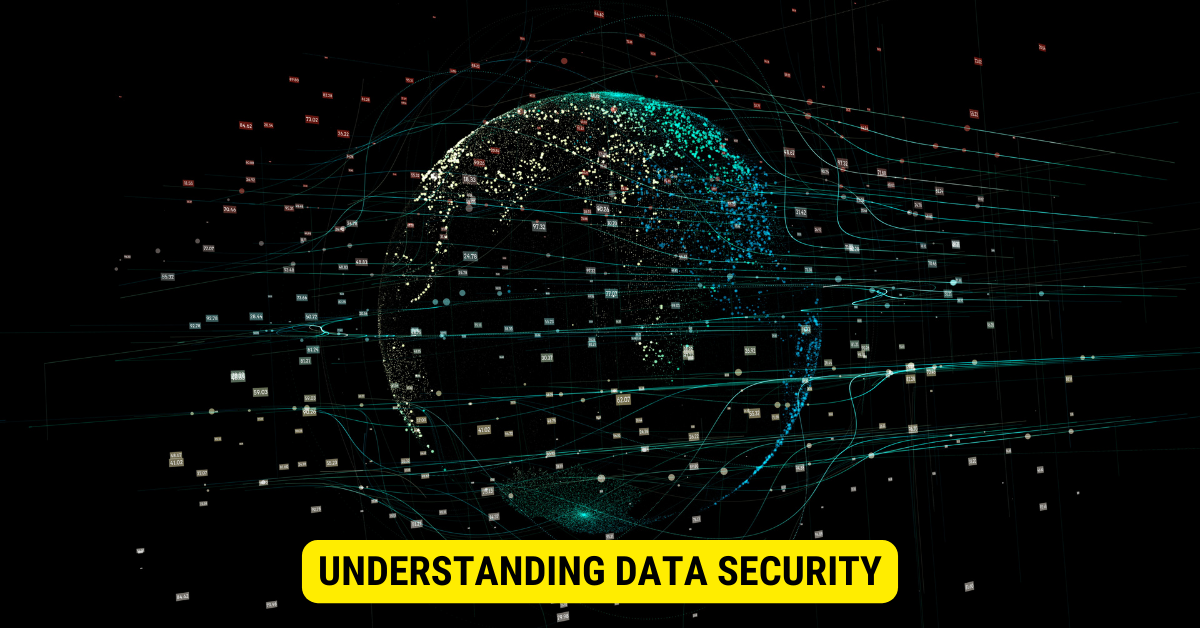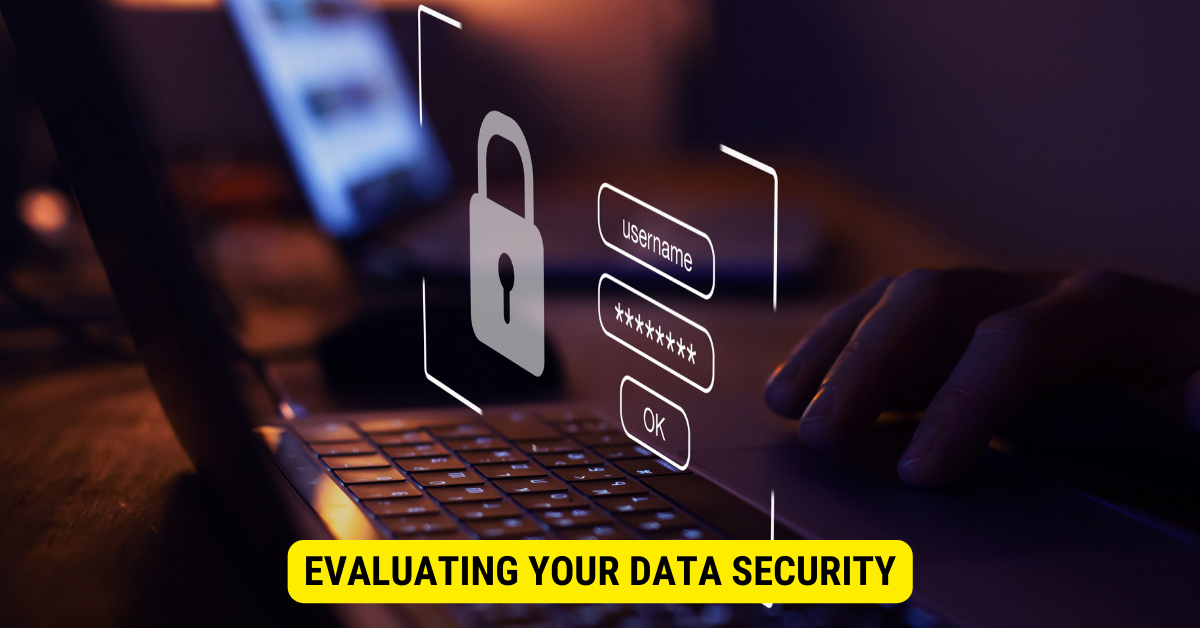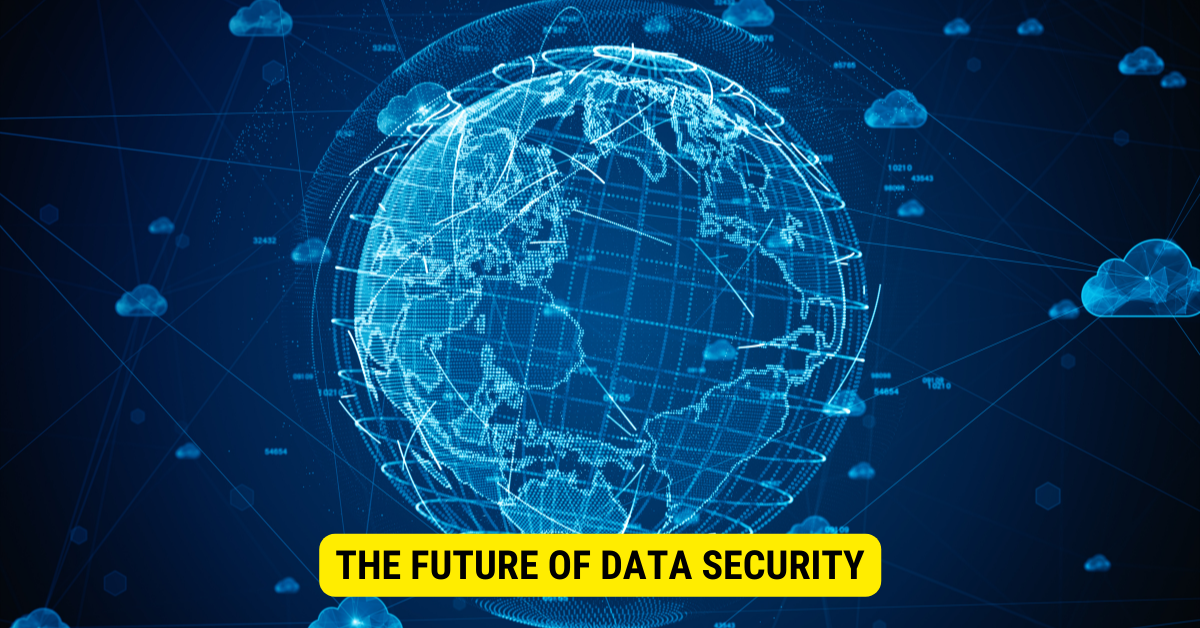No data is 100% secure; there’s always some level of risk involved with storing data, especially online. Proper precautions can greatly reduce risks, but they cannot eliminate them entirely. Always stay informed and vigilant about security practices.
Data security has become a pressing concern for individuals and businesses in the digital age. How can we ensure our private and sensitive information is secure from cyber threats? We will delve deeper into data security, understanding its importance, assessing its current state, and looking at ways to enhance it for greater peace of mind.
Understanding Data Security

What is Data Security?
Data security, in essence, pertains to protecting digital data and information from unauthorized access, theft, or any damage that malicious activities could cause. This sphere of information security ensures that data is safe, secure, and available when needed by authorized personnel.
Regarding data security, various layers of protection are implemented to safeguard sensitive information. Encryption is one such measure that is commonly used. It involves encoding data to become unreadable to anyone without the decryption key. This ensures that even if unauthorized individuals gain access to the data, they cannot make sense of it.
In addition to encryption, strong user authentication is another crucial aspect of data security. This involves implementing robust login procedures that require users to provide multiple forms of identification, such as passwords, security questions, and biometric authentication, to gain access to the data. By doing so, organizations can verify the identity of individuals and prevent unauthorized access.
Furthermore, backup solutions play a vital role in data security. Regularly backing up data ensures that even if there is a breach or a system failure, the information can be restored from a secure and unaffected source. This helps in minimizing data loss and ensuring business continuity.
Why is Data Security Important?
Data is considered the lifeblood of any organization today. Companies use data to improve operational efficiency and gain customer insights, which helps shape business strategies. Therefore, ensuring the security of this data is paramount.
Imagine a scenario where a company’s sensitive financial data falls into the wrong hands. This could lead to severe financial loss, not only for the organization but also for its customers and stakeholders. By implementing robust data security measures, organizations can mitigate the risk of such breaches and protect their financial well-being.
Individually, data security safeguards sensitive personal information such as banking details, social security numbers, and health records. A breach of this kind of data can lead to identity theft and severe financial loss. Individuals need to have confidence that their personal information is being handled securely by organizations they interact with, whether a bank, healthcare provider or an e-commerce platform.
Data protection is paramount in our modern, networked society, where information continuously flows through various channels. Given the escalating sophistication of cyber-attacks and advanced hacking methods, both businesses and individuals must remain alert and adopt strong data protection strategies. This ensures that their critical information remains confidential, intact, and accessible when needed.
The Current State of Data Security
Data security is a critical concern in today’s technologically advanced world. As technology continues to evolve, so do the threats to data security. It is important to stay informed about common data security threats.
Common Data Security Threats
Data security is consistently under threat from various malicious avenues. Among these, malware stands out. This harmful software is crafted to penetrate computer systems and access valuable data without permission. It can worm its way into systems via multiple channels, including dubious email attachments, compromised websites, or even transferable storage devices.
Phishing scams are another major concern. These deceitful tactics involve conning people into sharing private data, like login credentials or financial information, under the guise of being a reputable entity. Typically, they manifest as deceptive emails or counterfeit websites impersonating genuine institutions.
A particularly menacing challenge is ransomware. This is a malware variant that locks down a person’s data, only offering to decrypt it in exchange for a ransom. The implications can be severe for entities and individuals who depend heavily on their data.
Internal threats are equally worrisome. These originate from individuals inside an entity who, although they have legitimate access to crucial information, misuse it for ulterior motives. These threats could be either deliberate or accidental, which makes identifying and thwarting them quite challenging.
Moreover, the surge in the usage of Internet of Things (IoT) devices presents yet another risk. Devices such as internet-connected household gadgets, wearable tech, and industry-specific sensors, when connected online, are potential targets for cyber intruders. As these devices proliferate, ensuring their security is paramount to maintaining data integrity.
Recent Data Breaches and Their Impact
Over the past decade, there have been several high-profile data breaches that have had far-reaching consequences. These breaches have affected businesses and consumers, highlighting the importance of robust data security measures.
One notable example is the Yahoo data breach in 2013, where hackers accessed sensitive information of over three billion user accounts. This breach compromised personal data and raised concerns about the company’s ability to protect its users’ information.
The Equifax data breach in 2017 was another significant incident that exposed the personal information of approximately 147 million individuals. This breach had severe implications, including sensitive data such as social security numbers, addresses, and credit card details. The aftermath of this breach led to widespread criticism and raised questions about the effectiveness of data security practices.
In 2018, Facebook faced a major data breach that impacted around 87 million users. This breach involved unauthorized user data access by a third-party app, leading to concerns about privacy and data protection on social media platforms.
These high-profile breaches are a stark reminder of the colossal damage that compromised data security can cause. They demonstrate that data breaches can have severe financial, legal, and reputational consequences for businesses and result in personal hardships for individuals whose information is compromised.
In light of these incidents, it is evident that proactive data security measures are no longer a luxury but a necessity. Organizations and individuals must prioritize the implementation of robust security protocols, regular system updates, and employee training to mitigate the risks associated with data breaches.
Evaluating Your Data Security
 Ensuring your data’s security is paramount in today’s digital landscape. A secure system begins with establishing a comprehensive security policy, the foundation for safeguarding your valuable information. This policy should encompass various aspects, including strict user authentication, secure transfer of data, regular audits, and a robust reaction plan in case of a breach.
Ensuring your data’s security is paramount in today’s digital landscape. A secure system begins with establishing a comprehensive security policy, the foundation for safeguarding your valuable information. This policy should encompass various aspects, including strict user authentication, secure transfer of data, regular audits, and a robust reaction plan in case of a breach.
User authentication plays a crucial role in determining the security of your system. Implementing strong password policies, multi-factor authentication, and user access controls can significantly reduce the risk of unauthorized access to your data. By validating the identity of users before granting them access, you create an additional layer of protection.
The secure transfer of data is another critical component of a secure system. Utilizing encryption technologies, such as SSL/TLS protocols, ensures that data transmitted between your system and other parties remains confidential and protected from interception. Encryption acts as a shield, making it extremely difficult for attackers to decipher the information they may intercept.
Regular audits are essential for assessing the effectiveness of your security measures. By conducting thorough and systematic reviews of your system’s security controls, you can identify any potential vulnerabilities or weaknesses. These audits should include internal and external assessments to evaluate your data security posture comprehensively.
In a breach, having a robust reaction plan is crucial. This plan should outline the steps during a security incident, including incident response, containment, investigation, and recovery. By having a well-defined plan in place, you can minimize the impact of a breach and swiftly restore the integrity of your system.
To truly assess whether a system is secure, it is crucial to engage in regular penetration testing and vulnerability assessments. These proactive measures involve simulating real-world attacks to identify weak points before attackers do. By conducting these tests, you can uncover potential vulnerabilities and take appropriate action to address them, strengthening your overall security posture.
Tools for Assessing Your Data Security
Several tools are available to assist you in assessing the security of your data. When combined with regular system audits, these tools can help ensure that your data security is up to standard.
Firewalls act as a first line of defense, monitoring and controlling incoming and outgoing network traffic based on predefined security rules. By implementing a firewall, you can regulate access to your system, preventing unauthorized connections and potential attacks.
Intrusion detection systems (IDS) are designed to detect and respond to unauthorized access attempts or malicious activities within your network. These systems monitor network traffic and generate alerts when suspicious behavior is detected, allowing you to take immediate action to mitigate potential threats.
Security information and event management (SIEM) solutions provide a centralized platform for collecting, analyzing, and correlating security event data from various sources within your system. By aggregating and analyzing this data, SIEM solutions enable you to identify patterns and anomalies that may indicate a security incident, facilitating timely response and remediation.
However, it is important to remember that data security is not a one-time action but a constant process of reassessment and improvement. As technology evolves and new threats emerge, it is crucial to stay vigilant and adapt your security measures accordingly. Regularly updating your security policies, implementing the latest security patches, and staying informed about emerging threats are essential to maintaining a robust and secure data environment.
Enhancing Your Data Security
Best Practices for Data Protection
There are a range of best practices that individuals and organizations can adopt to improve their data security. These include strong password policies, regular backup of data, use of secure networks, and regular updates of software and systems. Training to increase awareness about phishing and other social engineering tactics is also vital.
The goal is to create a security-first culture where every member understands the importance of data security and their role in maintaining it. Cultural change is the first and perhaps most important step in enhancing data security.
Advanced Security Measures to Consider
As the world of cyber threats evolves, so too do the means of protecting against them. Advanced security measures such as biometric security, artificial intelligence, and machine learning can be beneficial.
These technologies help identify unusual behavior that may signify a security breach, offering higher protection and detection than traditional methods.
The Future of Data Security

Emerging Technologies in Data Security
Data security will continue to be a top priority in the future as more sophisticated threats emerge. Emerging technologies like blockchain, quantum computing, and Zero Trust architecture are starting to play a crucial role in improving data security. These technologies offer new and improved ways to protect and verify data integrity.
The exact path of future data security is hard to predict, but one thing is for sure: It will continue to be a crucial part of our digital lives.
The Role of AI and Machine Learning in Data Security
AI and Machine Learning play a significant role in the future of data security. These technologies can learn typical user behavior and highlight anomalies, providing early warning signs of a potential breach.
AI is also used in threat hunting, where it can sift through massive amounts of data to identify threats. This facilitates proactive threat prevention and ensures a quick response when breaches occur.
Is my data truly secure?
Key Takeaways:
- Absolute security is a myth; it’s about minimizing risks.
- Regularly updating software, systems, and security protocols is crucial.
- Two-factor authentication, encryption, and secure backups can enhance data security.
- Educating users about security best practices can prevent many breaches.
- Always be wary of new and evolving threats and adjust security measures accordingly.
FAQs
Q: What’s the best way to secure my data?
A: Employ a multi-layered security approach: use strong passwords, enable two-factor authentication, regularly backup data, and keep systems updated.
Q: Are cloud storage solutions secure?
A: Reputable cloud providers have robust security measures, but it’s essential to use strong access controls and encryption.
Q: How can I protect data on my mobile device?
A: Use biometric or strong PIN protection, regularly update apps and OS, and be cautious with app permissions and public Wi-Fi.
Q: Can encrypted data be hacked?
A: While encryption provides a high level of security, no system is invulnerable. It’s crucial to use strong encryption standards and update them as needed.
Q: How often should I review my data security practices?
A: Regularly, especially after adding new devices or software or responding to new threats.
Conclusion
In conclusion, ensuring data security is an ongoing, continuously evolving process. With a solid understanding of data security and by implementing robust measures, you can give yourself the best protection against the digital world’s threats.
